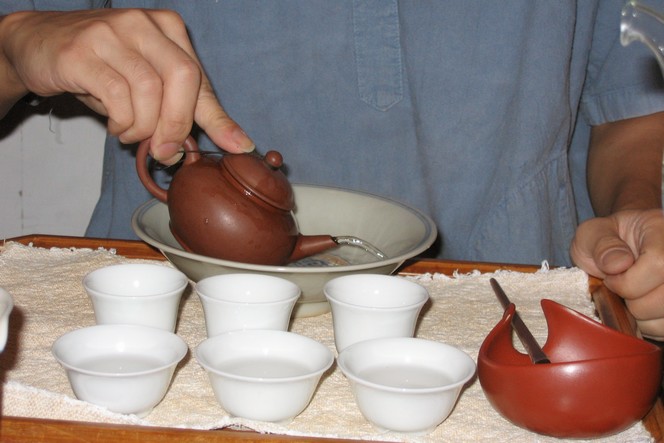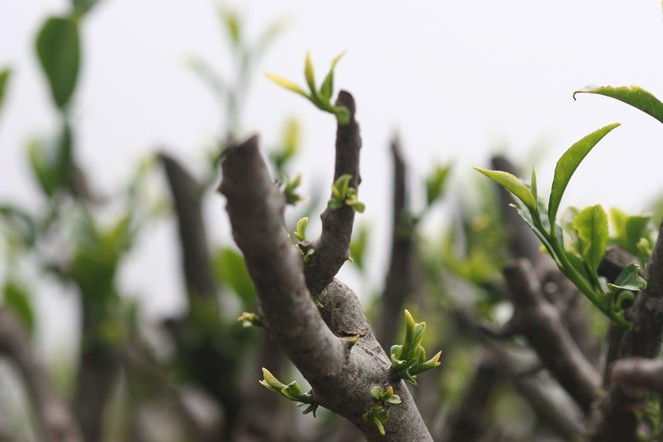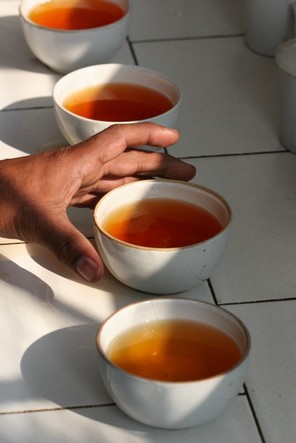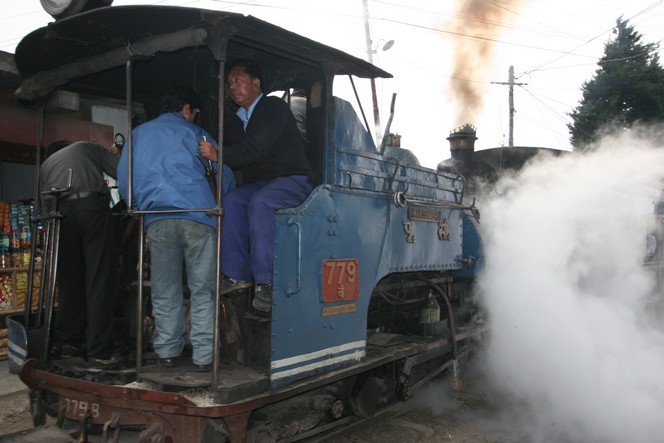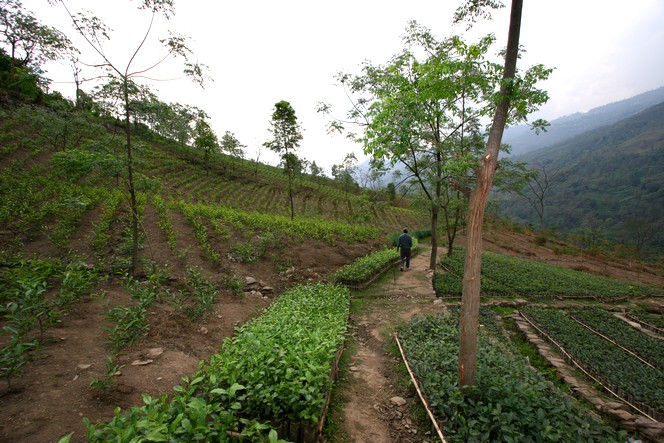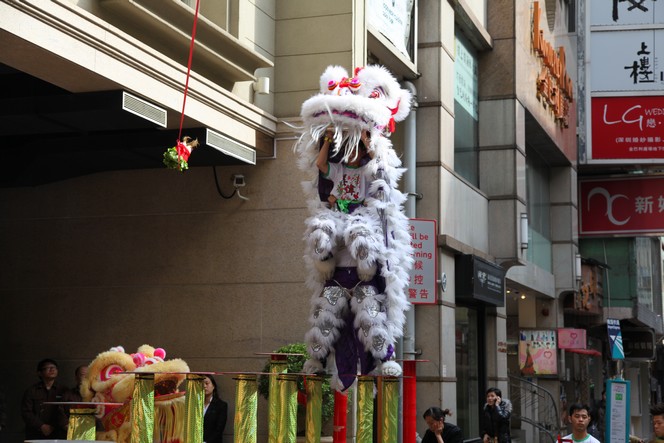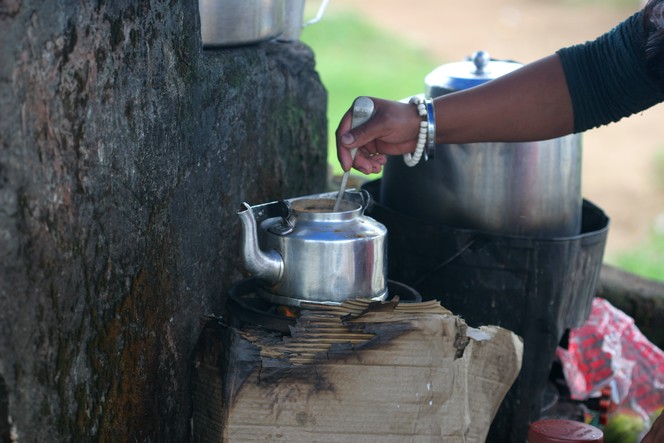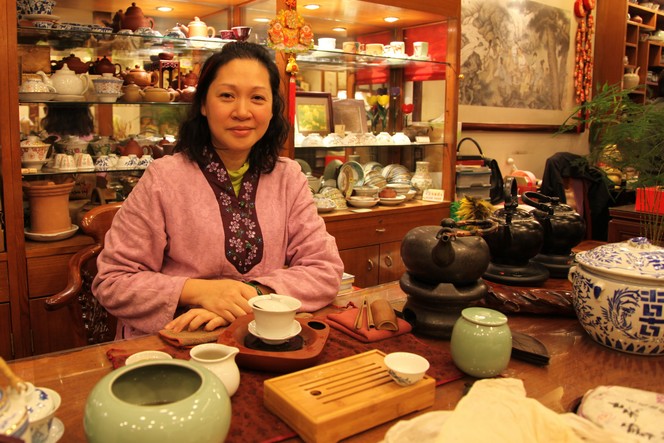In Taiwan and in some regions of China, tea is prepared according to the Gong Fu method. This requires a very small teapot, smelling cups, tasting cups and a tea boat, a hollow vessel into which you pour the water used to rinse the tea and the cups.
The Gong Fu method consists of infusing the same tea leaves repeatedly for just a few seconds at a time. Each infusion, known as “water”, releases new aromas, until there are no more.
This method is particularly appropriate for the preparation of certain Wu Long or Pu Er teas. On Sunday I tasted a 2008 Pu Er Xiao using this method: it was a real treat.

